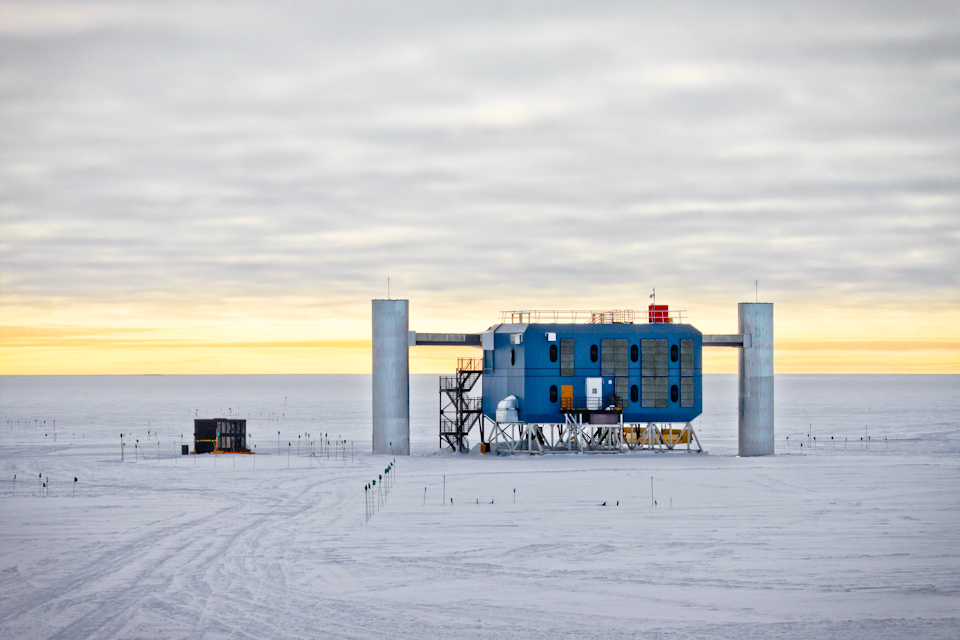

(MAPO visible in background)
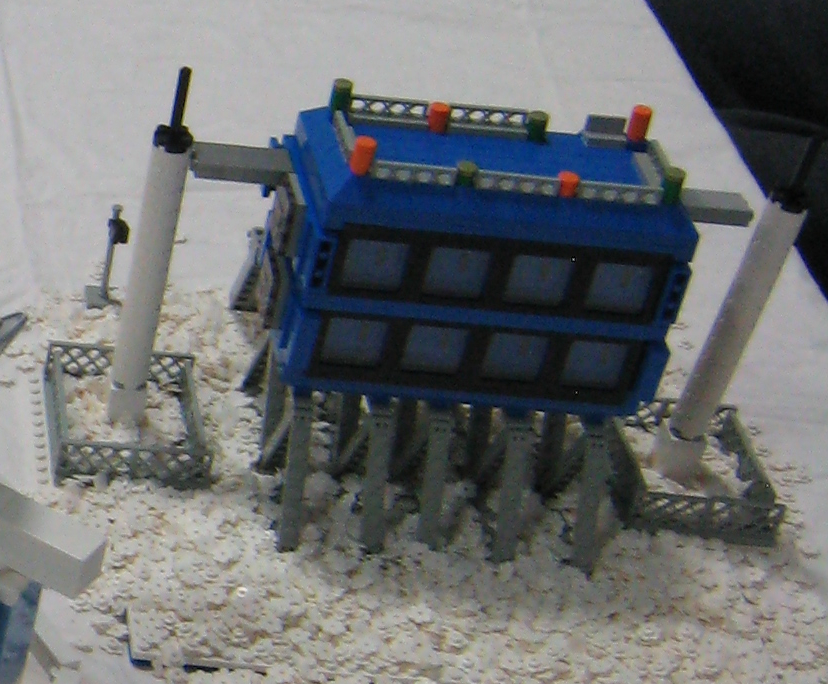
(model of SPT visible in foreground)

The four "blue buildings" (the IceCube Lab, the DSL with its attached SPT and Keck Array Telescopes, the MAPO with its attached BICEP and decomissioned VIPER telescopes, and the ARO) are repurposed prototypes for the Amundsen-Scott Station. The front of the ARO faces the station; the fronts of the others face away from the station. They were shipped to Antarctica as pre-fabs and substantially remodeled on-site. The laboratory area of the base is divided into the Dark Sector (the DSL, the IceCube, and MAPO), from which stray light and radio waves are excluded, the Quiet Sector (currently unoccupied, but reserved for seismologic and related experiments), from which sound is excluded, and the Clean Sector (ARO), from which pollution is excluded. Overflights are banned from all three sectors.
The IceCube [Vf,Vr,Vl], operated jointly by the University of Wisconsin (Madison) and the National Science Foundation (NSF), is the world's largest (and most sensitive) neutrino observatory, containing one cubic kilometer of water (as optically clear ice). Although conventional matter can't exceed the speed of light in a vacuum, this is possible in a medium such as water. When charged particles do this, they create conical shock waves called Čerenkov light. Neutrinos are nearly massless and travel at almost the speed of light, but they have no charge, so they don't generate Čerenkov light directly. Rarely they knock an electron loose, or a water nucleus, which are charged and do generate Čerenkov light that sometimes permits calculation of the neutrino's energy and trajectory. The IceCube has been used to map neutrinos that originated near the center of our galaxy. The IceCube is the successor to AMANDA (the Antarctic Muon And Neutrino Detector Array), which was used to test the technology at a smaller scale. The IceCube Lab (ICL) is about 1 km "east" of the station, and about 500m "north" of the DSL and MAPO. The cables that connect the Čerenkov light detectors of the IceCube were originally delivered to the South Pole on large spools. Rather than returning them as waste, they have been assembled into Spoolhenge [W], the only outdoor art installation on Antarctica.
The Dark Sector Laboratory (DSL, [Xf,Xr,Xt,Xl]) is so named because of the absence of light and electromagnetic pollution that would otherwise interfere with ongoing experiments. Two large telescopes are mounted on the DSL: the South Pole Telescope (SPT), on an extension, and the Keck Array, on the roof. The SPT, the Keck Array (up to 5 identical refractors similar to BICEP2 with a total output roughly half that of BICEP3 [see MAPO below], operated by the Harvard-Smithsonian Center for Astronomy [CfA] with assistance from the Keck Foundation and the NSF), and BICEP (operated by Caltech, with funding from the NSF), though associated with different institutions, share data. The DSL is near MAPO. The South Pole Telescope (SPT, [Xt]) is a 10m reflector radio telescope finished to within 0.001in (0.04mm) of its designed shape. Its field of view is about a square degree, and its resolution is limited (so far) by its camera (currently SPTpol, SPT polarimeter, with a resolution of 1.2 minutes of arc at its typical observing frequency of 150 GHz). The extension to the DSL, on which the SPT is mounted, is designed so that its roof can be rolled away to make room for the SPT's receiver cabin, which can be worked on in relative comfort. (The model does not show this.) The SPT is operated by a consortium headed by Berkeley, funded by the NSF.
The Martin A. Pomerantz Observatory (MAPO, [Yf,Yr,Yl), now operated by the University of Delaware, was named in 1995 after the first true Antarctic astronomer, Pomerantz (1916-2008), who began work at the South Pole in 1964. The telescopes incorporate shields to reduce the noise of radio waves reflected by the surrounding snow. The DASI (Degree Scale Angular Interferometer) radio shield, visible in the photos, is mounted on the roof of an extension to MAPO. It surrounds the BICEP (Background Imaging of Cosmic Extragalactic Polarization) radio telescope (currently BICEP3, a 550mm f/1.6 refractor operating at 95 GHz). The 2.1m reflector ACBAR/VIPER telescope (ACBAR: Arcminute Cosmology Bolometer Array Receiver; "VIPER", the last in a series of snake-named telescopes at the South Pole, is not an acronym), shown in the photo on the far end of MAPO, was decomissioned in November 2005 and reinstalled in 2014 at Siena College (Loudonville, NY, USA), but was formerly operated by a consortium headed by Berkeley. MAPO is about 1 km "east" of the station.
The Atmospheric Research Observatory (ARO, [Zf,Zr,Zl]), about 500m upwind ("south") of the Amundsen-Scott Station and operated jointly by the NSF and the National Oceanic and Atmospheric Administration (NOAA), measures the cleanest air in the world over long periods. The ARO recently published a 50-year time series of its carbon dioxide measurements, for example. Note the extra "layer" that separates the two floors of the ARO; in the model, this is used to support the second level of the cargo dock, except on MAPO, which has no dock. (Similar layers exist in the other three "blue buildings," but they are clearest in the ARO.)

|

(MAPO visible in background) |

(model of SPT visible in foreground) |

|
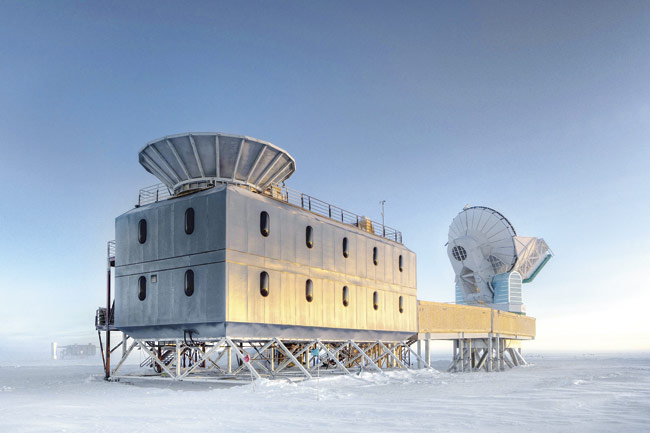
(right, SPT; left, on roof, Keck Array) |
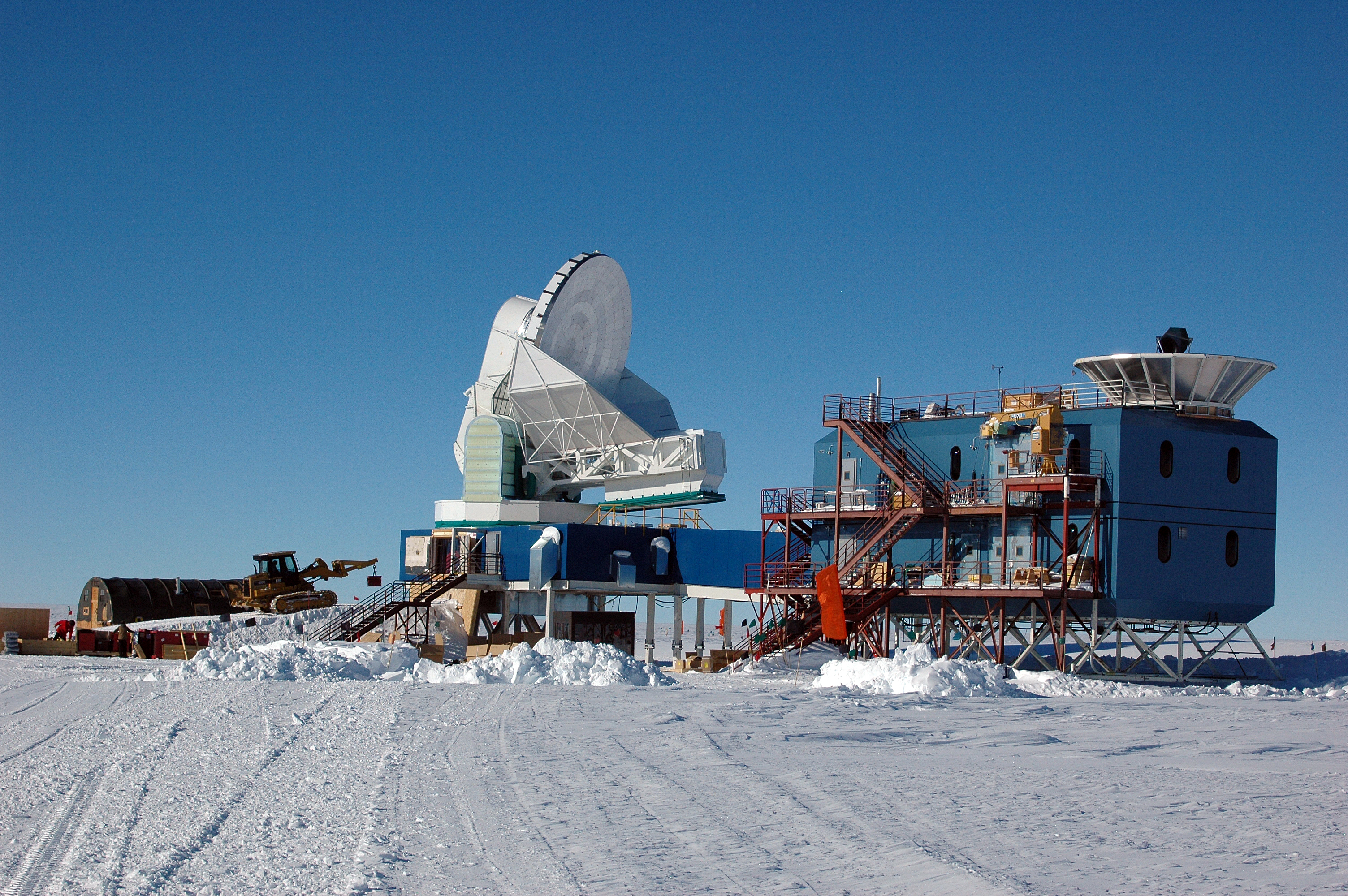
|
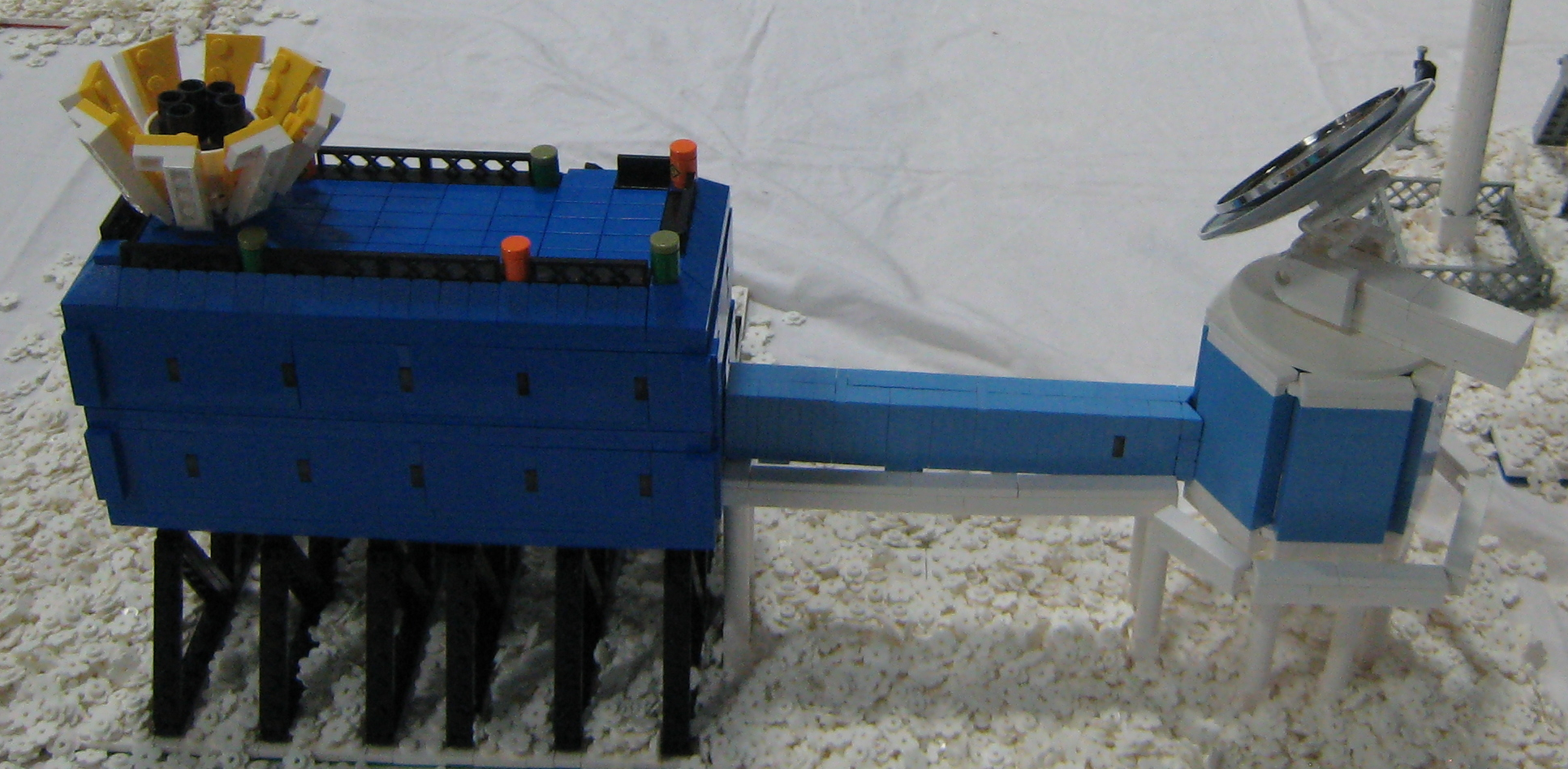
(models of Keck Array on roof, SPT at right; model of ICL visible in background) |

|
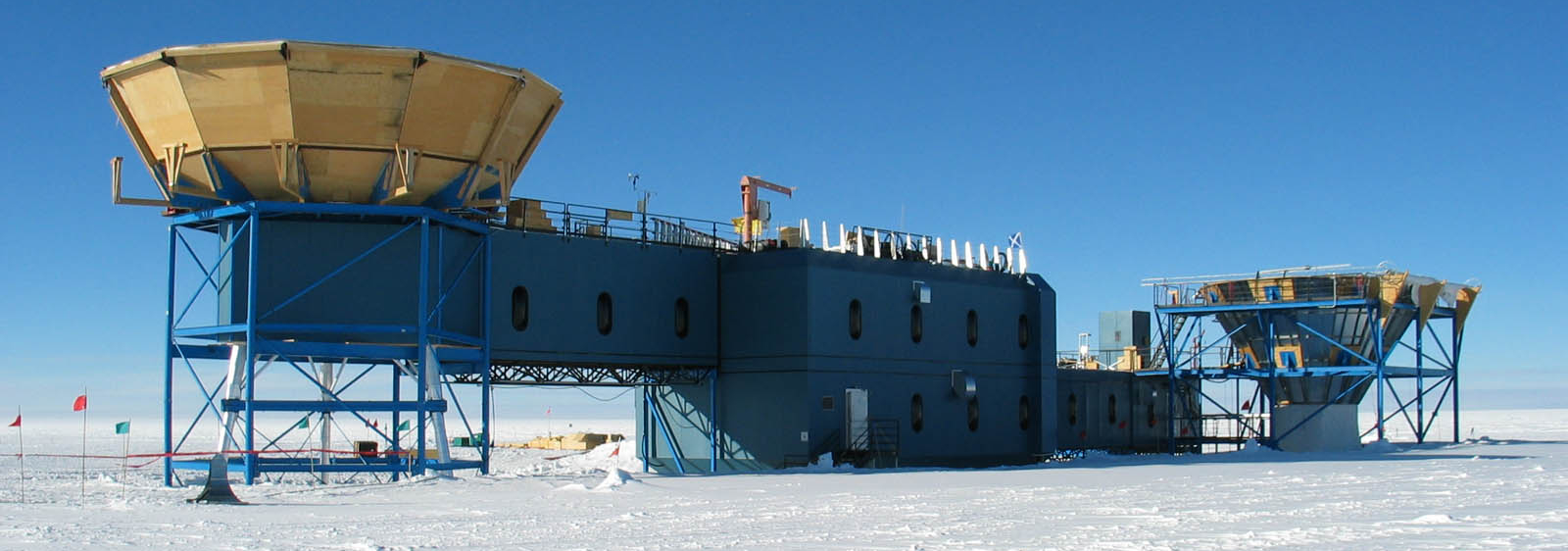
|
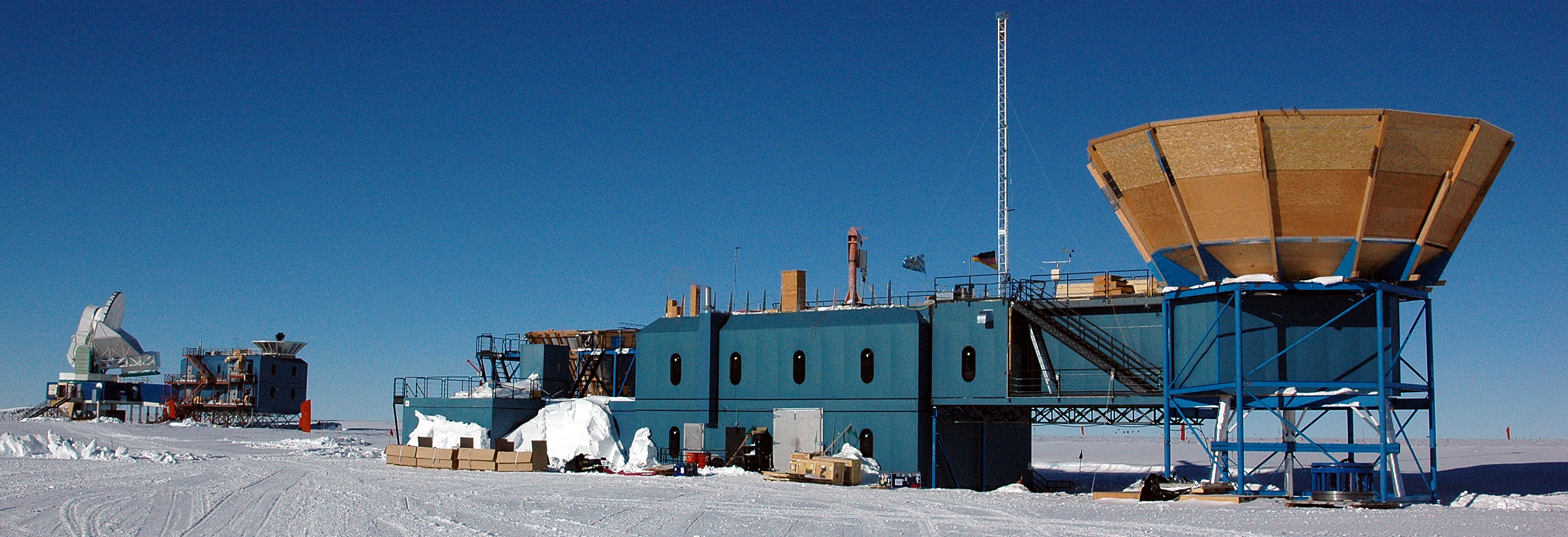
(DSL visible in background) |
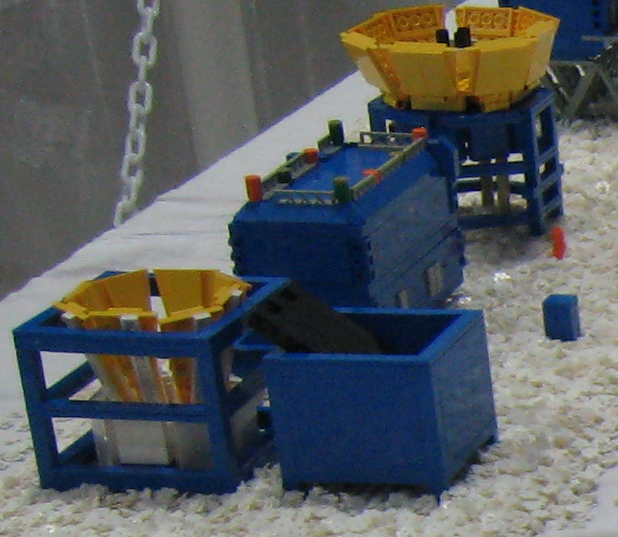 and BICEP (model of ARO visible in background) |
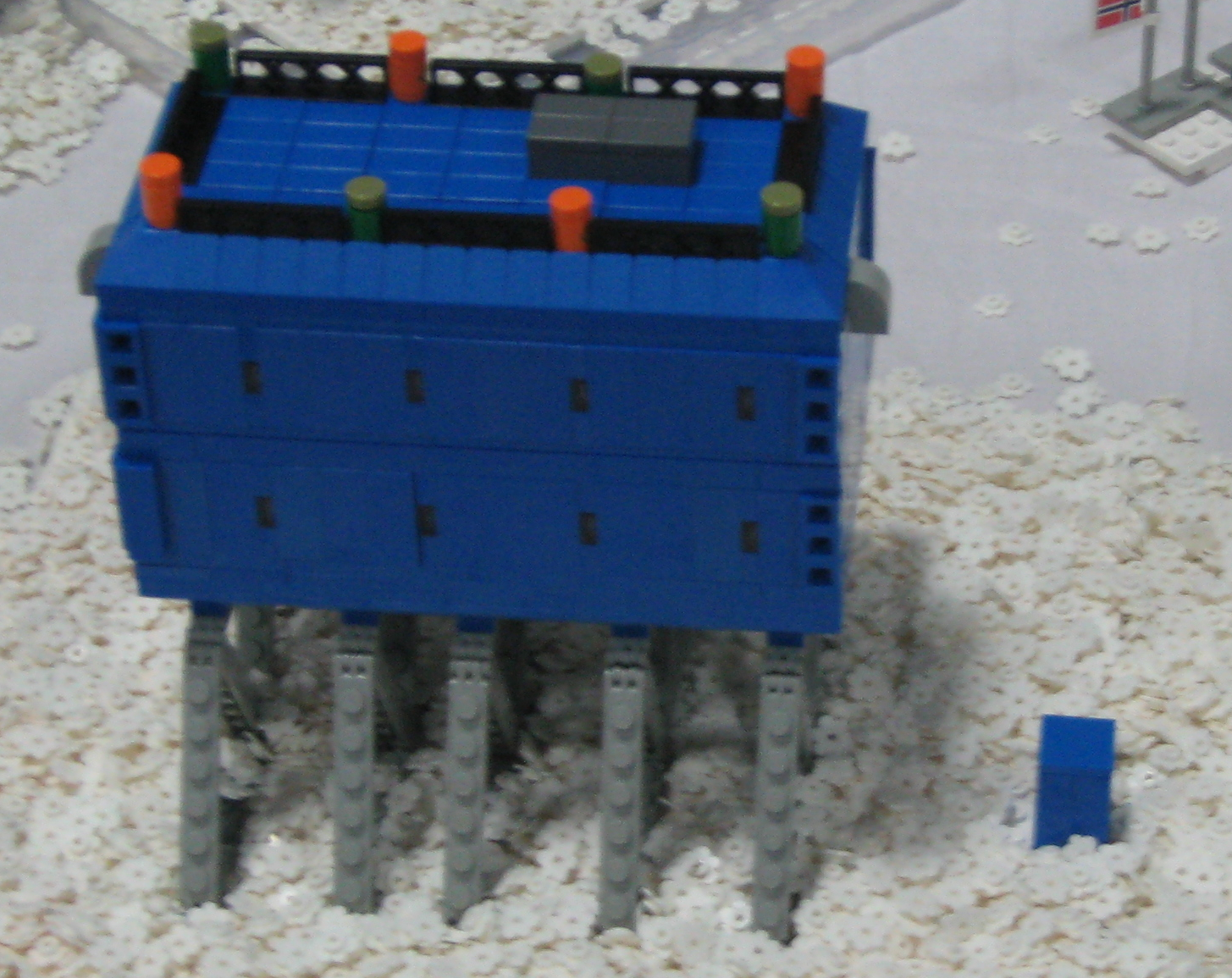
(model of geographic pole visible in background) |

|

(Amundsen-Scott Station visible in background) |